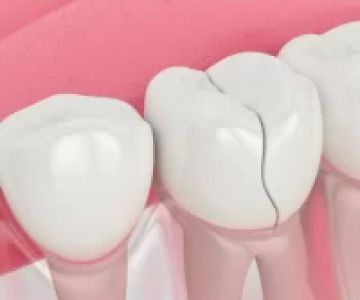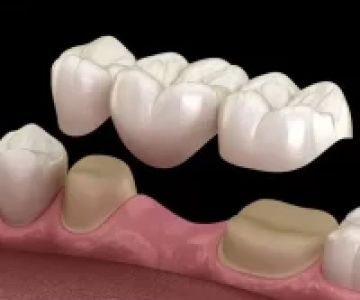How Is Gum Disease Treated? Comprehensive Guide to Gum Disease Treatment Options
- Understanding Gum Disease
- Common Causes of Gum Disease
- Symptoms and Diagnosis of Gum Disease
- Gum Disease Treatment Options
- Prevention and Maintenance of Gum Health
1. Understanding Gum Disease
Gum disease, also known as periodontal disease, is a common condition that affects the tissues surrounding and supporting your teeth. It can range from mild gum irritation (gingivitis) to more severe forms that can result in tooth loss. The primary cause of gum disease is poor oral hygiene, which leads to plaque buildup on teeth and gums. If left untreated, plaque can harden into tartar, leading to infection and inflammation in the gums.
Understanding the stages and causes of gum disease is essential to prevent it or treat it early on. If you’re experiencing symptoms like swollen gums, bleeding while brushing, or bad breath, it might be time to consider treatment options before the condition worsens.
2. Common Causes of Gum Disease
Gum disease is caused by a variety of factors, most of which are preventable with good oral hygiene. Some common causes include:
- Poor Oral Hygiene: Inadequate brushing and flossing lead to plaque buildup, which, if not removed, can cause gum inflammation and infection.
- Smoking: Smoking weakens your immune system, making it harder for your body to fight off gum infections.
- Genetics: Some people are genetically predisposed to gum disease, regardless of their oral hygiene habits.
- Health Conditions: Certain health conditions, such as diabetes, can increase the risk of developing gum disease.
- Medications: Some medications can affect oral health by reducing saliva production, which increases the risk of gum disease.
3. Symptoms and Diagnosis of Gum Disease
Recognizing the symptoms of gum disease early can help prevent it from progressing to a more serious stage. The common symptoms include:
- Red, swollen, or bleeding gums
- Gum recession or pockets forming between the teeth and gums
- Persistent bad breath or a bad taste in the mouth
- Loose teeth or changes in how your teeth fit together when you bite
If you notice any of these symptoms, it’s important to see a dentist for a thorough examination. Your dentist will assess your gum health, look for signs of inflammation, and may take X-rays to check for bone loss. A diagnosis can determine the severity of your gum disease and guide the appropriate treatment options.
4. Gum Disease Treatment Options
When it comes to treating gum disease, the treatment plan will depend on the severity of the condition. There are several treatment options available, ranging from non-surgical treatments to more advanced surgical procedures.
- Scaling and Root Planing: This non-surgical treatment involves cleaning below the gumline to remove plaque and tartar buildup. Root planing smooths the tooth roots, helping the gums reattach to the teeth. It is often recommended for patients with mild to moderate gum disease.
- Antibiotics: In some cases, your dentist may recommend antibiotics to help reduce gum infection and promote healing. These can be applied directly to the gums or taken in pill form.
- Laser Treatment: Laser therapy is an advanced treatment that uses light energy to remove infected tissue and promote gum healing. This method is less invasive than traditional surgery and can be used for both early and advanced stages of gum disease.
- Surgical Procedures: For severe cases of gum disease, surgical treatments may be necessary. Procedures like flap surgery or bone grafting can be used to reduce gum pockets, repair bone loss, and restore gum tissue.
5. Prevention and Maintenance of Gum Health
Preventing gum disease is far easier than treating it. Maintaining a good oral hygiene routine and regular dental visits can significantly reduce the risk of gum disease. Here are some key steps to maintain healthy gums:
- Brush and Floss Regularly: Brush your teeth at least twice a day and floss daily to remove plaque and prevent gum inflammation.
- Visit Your Dentist: Regular dental checkups and cleanings help catch any early signs of gum disease and prevent it from worsening.
- Avoid Smoking: Smoking is a major risk factor for gum disease, so quitting smoking can improve your gum health.
- Maintain a Healthy Diet: A balanced diet rich in vitamins and minerals supports gum health and overall oral hygiene.
If you’re looking for personalized advice on gum disease prevention or treatment, consider visiting Dentistry Toothtruth. Our dental professionals can provide guidance and treatment plans tailored to your specific needs to keep your gums and teeth in optimal health.







 Harbor Cove Dental5.0 (191 review)
Harbor Cove Dental5.0 (191 review) Palo Alto Oral Health4.0 (18 review)
Palo Alto Oral Health4.0 (18 review) My Orthodontist - Deptford4.0 (555 review)
My Orthodontist - Deptford4.0 (555 review) Rosedale Dental: CJ Jang, DDS4.0 (35 review)
Rosedale Dental: CJ Jang, DDS4.0 (35 review) Sugar Hill Family Dental4.0 (83 review)
Sugar Hill Family Dental4.0 (83 review) The Downtown Dentist5.0 (6 review)
The Downtown Dentist5.0 (6 review) The Importance of Oral Health Education During Pregnancy for a Healthy Pregnancy
The Importance of Oral Health Education During Pregnancy for a Healthy Pregnancy Best Tips for Brushing Your Teeth Properly for Healthy Gums: Essential Techniques for Oral Health
Best Tips for Brushing Your Teeth Properly for Healthy Gums: Essential Techniques for Oral Health Why Skipping Dental Checkups Can Lead to Bigger Oral Health Problems
Why Skipping Dental Checkups Can Lead to Bigger Oral Health Problems Advantages of Porcelain Dental Restorations
Advantages of Porcelain Dental Restorations How Can Diabetes Cause Tooth and Gum Problems? Preventing and Managing Oral Health Issues
How Can Diabetes Cause Tooth and Gum Problems? Preventing and Managing Oral Health Issues Healthy Habits for Promoting Good Oral Health and Hygiene: Tips for a Healthy Smile
Healthy Habits for Promoting Good Oral Health and Hygiene: Tips for a Healthy Smile